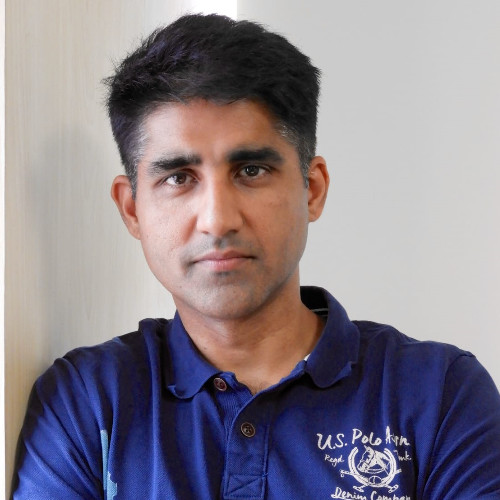Or listen in your favorite podcast app
Apple Podcasts / Google Podcasts / Spotify
The first 100 days for any executive are a whirlwind. You’re learning a new job and wrapping your head around your new responsibilities. Now, imagine those first three months when you’re the CIO of Wipro, a company with a net worth of $8.5 billion and more than 18,000 employees. The urgency hits a little quicker. That’s Rohit Adlakha’s story and on this episode of IT Visionaries, Rohit details what those early days as CIO were like and the protocols his team put in place to be successful.
3 Key Takeaways
- Your first day as a CIO, you become a veteran. You’re constantly learning on the job
- The role of the CIO is only limited by the boundaries you set for yourself
- You never have a better opportunity to change things than your first 100 days
For a more in-depth look at this episode, check out the article below.
The role of the CIO has never evolved as rapidly, yet the scope will never be more narrowly focused. Rohit Adlakha joined Wipro in May of 1995 as a Practice Head of Wireless Solutions, flash forward 25 years, Adlakha now oversees Wipro’s 180,000 employees as their Chief Digital and Information Officer and Global Head of Wipro Holmes. Adlakha joined IT Visionaries to discuss his first 100 days as CIO, the pillars by which his team operates under, and why the CIO cannot set boundaries on themselves.
Adlakha likes to joke that he was born into technology. His father was an engineer, naturally, he gravitated towards a degree in engineering with an eye towards joining Wipro out of college, making it fitting that his love for technology provided the foundation for a quarter-century stint at Wipro, a company that prides itself on innovation and managing disruption.
Today, Adlakha sits atop the Wipro technology structure, residing in a unique role with three C-level distinctions interwoven in an effort to drive agility, speed, and digital experience. An effort by the company he calls a bold step.
“It’s been a bold step by our company to put all those three roles together under one umbrella,” Adlakha said. “I frankly haven’t seen any other company going in this direction of combining these three facets of life under one umbrella. So it’s a real hot seat for me and hopefully, the journey has been good to know.”
When Adlakha joined Wipro, he was the youngest employee in the company. Fresh from college with his eyes set on making a difference, Adlakha never saw himself being a CIO — a role a lot of peers like to quip means ‘Career is over.’
“I see this as a role that can transform lives,” Adlakha said. “It’s not just inducing new technology, or keeping the lights on. But whatever we experience in the consumer world, how do you bring all that fantastic technology to upskill capability, upskill a person’s aspirations, and really make a happier place of living in your workplace.”
For Adlakha, the opportunity served as a challenge. A chance to learn on the job, but importantly he operated under a premise that he could make a difference within the company he had grown up in over the last 25 years.
“The day I said yes to the role, I became a veteran in the role,” Adlakha said. “It was absolutely a sprint from day zero.”
After thinking and planning how his team would spend the first 100 days of their leadership, Adlakha and his team of executives formulated a plan for success based on four tenets. The first of those tenets revolved around moving from operation stability to user experience.
“The whole paradigm of any time, any device, anywhere, a combination of what we call human labor and digital labor and crowdsourcing, where you break away silos and boundaries, you know, beyond your offices, how do you make sure that you make your systems intuitive?” Adlakha said. “How do you make sure that they are personalized, they have the speed, the agility, communication, collaboration, and without the physical touch of 187,000 people, how do you make sure that you collaborate effectively as one team itself? If you have that paradigm and ethos in your mind, then it’s all about experience and happiness.”
From there the goal began shifting his team’s mindset to that of the customers. And Adlakha says when you finally get your team to change their mindset, that is when you can experience real change and real innovation.
“The first webcast that I did to my team, the thing that I told them is put yourself in the shoes of whom you’re serving and imagine you being served, and then look inward whether you’re serving yourself correctly or not,” Adlakha said. “It was about being responsive, being sensitive, and the moment that shift happened in people’s minds, the whole idea about customer service versus keeping the lights on that shift actually happened.”
The second pillar was to make sure that the business was aligned and that the CIO had a seat at the table — if Wipro wanted to be innovative and change their employees’ experience, they needed to be able to prove to the board what they were doing was a benefit for the company.
“From being a follower, to a leader, from taking orders to defining what the company’s journey should be, that’s the second tenet that we set for ourselves,” Adlakha said. “Our philosophy is that whatever we did today, even if we are a notch higher or better tomorrow, then that’s a success mantra for us.”
To advance their internal experience, Adlakha stated they needed to make sure that their employees could trust the security of their networks, which meant something routine as an employee inputting their address into the Wipro ecosystem, that employee needed to be able to trust their service. To do this, Wipro adapted a zero-trust mindset.
“Security and trust is one of the biggest priority areas for Wipro in the industry and we’re driving something called a zero-trust framework, which means trust, nothing,” Adlakha said. “Ultimately they should sleep a peaceful night saying yes, the procedure function is there. Whatever I may do is trustworthy.
Pride of the function is the fourth and final pillar. Adlakha consistently challenged his team to think innovatively and progressively. The approach is simple: employees should take pride in the place they work and should always be looking to improve the company’s performance.
“Small things go a long way,” Adlakha said. “The moment you become a showcase, the moment you become a pioneer in technology, people will come to you.”
Adlakha mentioned you never get a better opportunity to change things in your first 100 days in a new role, so what advice would he give to a first-time CIO? Treat every day as if it’s a learning experience and remember to never place boundaries on your capabilities.
“The boundaries that we set in our mind and the power of the CIO function of the technology function is absolutely unlimited. So that’s been my first surprise,” Adlakha said. “Learning that every day you push the boundary and literally the whole company is yours.”
—




